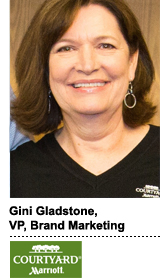 While marketers have long rallied around tent-pole events like the Super Bowl, the focus is no longer solely on the big-ticket TV buys or stadium sponsorships.
While marketers have long rallied around tent-pole events like the Super Bowl, the focus is no longer solely on the big-ticket TV buys or stadium sponsorships.
But big games are still valuable to advertisers. While ads tied directly to major sporting events still command the most money because of their enormous draw, marketers are also investing in cross-channel activities to support their major campaigns.
The insurance vertical, for instance, is strongly associated with sporting events – this year, audiences have been subjected to Denver Broncos star quarterback Peyton Manning humming the Nationwide Insurance jingle – and it has increased its overall ad spend from $500 million to $4 billion over the last 15 years, according to Edward Gold, State Farm Insurance’s advertising director.
“Sports will always be a great medium for us, because it’s a communal thing people still want to watch live,” said Gold. “Even with the proliferation of DVRs and Netflix and video on demand, there’s generally no reason to watch [a game] after it has aired and you already know the final score.”
At the same time, brands need to be more strategic in how they tie themselves to sporting events. Digital advertising and social media offer more cost-effective ways to reach sports fans, since the average cost of a 30-second Super Bowl ad last year was $4 million, according to comScore. And the proliferation of mobile devices fragments viewer attention.
“You can’t discount the importance of making sure you have aligned your activity to make the most of what is a massively high amount of interest in a short period of time,” said Rory Maxwell, global head of strategy at MediaCom Sport, a division of the WPP agency MediaCom that focuses on sports media and sponsorships.
MediaCom Sport comprises 15 or 20 people, but that staff collaborates regularly with a 500-strong group at MediaCom Beyond Advertising, a team that handles content marketing, digital and advertiser programming, and production.
“It made total sense for us as an operation to offer [sports sponsorships] combined with content services,” Maxwell explained. “So many sponsorships and brand activity now takes place across social, digital, mobile, and offline, and has moved away from just the typical live coverage on TV.”
While fashion accessories retailer Alex and Ani bought a Super Bowl ad for the first time last season – the mass awareness was worth the investment, said VP of digital strategy Ryan Bonifacino – for the coming Super Bowl, the retailer is supplementing a Super Bowl spot with targeted pre-roll video and iBeacon promotions for its stores around NFL-licensed jewelry.
 State Farm, which advertises on NFL games (Green Bay Packers quarterback Aaron Rodgers is a spokesperson) and sponsors NBA broadcasts on ESPN and TNT, is expanding its sports-related advertising into new avenues like second-screen apps and Twitter Amplify promotions around replays of pivotal game highlights.
State Farm, which advertises on NFL games (Green Bay Packers quarterback Aaron Rodgers is a spokesperson) and sponsors NBA broadcasts on ESPN and TNT, is expanding its sports-related advertising into new avenues like second-screen apps and Twitter Amplify promotions around replays of pivotal game highlights.
But for Gold, the focus is more on the audience and medium, less on the channel.
“It’s about video,” said Gold, reflecting on the evolution of the brand’s sports alignments. “You can still take a channel-based approach, but those channels have changed.”
Consequently, while State Farm partners with more than 20 NBA teams, its strategies extend beyond league-sanctioned partnerships. It also sponsors content on ESPN.com and Bleacher Report, and developed a viral YouTube video starring LA Clippers point guard Chris Paul.
Sports media investments are largely still custom and direct-sold integrations. Those sponsorships are deliberately placed and very high-touch. Although State Farm uses programmatic media in “a big way,” according to Gold, generally those campaigns are lower-funnel calls to action around insurance policy contact forms and the like.
“When we’re running ads in football, we’re one of five sponsors of CBS’s fantasy football sites, so we want make our presence felt in that custom environment,” Gold said. “We want to be there when someone is in the mind-set of reading about the NBA, not just because they’ve been on an NBA site and now they’re looking up their stock portfolio. So certainly we look at sports as more of an upper-funnel awareness” mechanism.
Getting that upper funnel awareness via sponsorship is one of the reasons that Courtyard is the NFL’s official hotel sponsor for the fourth consecutive year. Leading up to the kickoff of the NFL season in September, Courtyard placed ads on YouTube and the NFL Network’s Total Access platform featuring the NFL Network’s television host Rich Eisen interviewing hotel guests.
“It was a great way to engage people and bring them into our YouTube channel and to expect something that’s fun to watch, but that still ties to our NFL partnership,” said Gini Gladstone, VP of marketing for Courtyard by Marriott. In addition to the sponsored NFL Network videos, Courtyard asks travelers to upload their own videos for a shot at becoming a Greatness On The Road traveler of the week.
 Although Courtyard shies away from naming any one athlete as its spokesperson, it has used Philadelphia Eagles quarterback Nick Foles for a “Courtyard Camera” campaign, in which Foles, disguised as a Courtyard food and beverage server, staked out fantasy-league draft events and surprised league owners.
Although Courtyard shies away from naming any one athlete as its spokesperson, it has used Philadelphia Eagles quarterback Nick Foles for a “Courtyard Camera” campaign, in which Foles, disguised as a Courtyard food and beverage server, staked out fantasy-league draft events and surprised league owners.
Although Gladstone did not reveal the specifics of how Courtyard applies data to tailor custom content sponsorships, she did say that to the extent that the hotel brand can figure out what its target customer is viewing, “we are definitely doing that” to make messaging more relevant. “Sports enthusiasts visit other channels and sites besides sports networks, so we definitely use a lot of data to find them where they are.”
Nevertheless, it’s still difficult to quantify the value of a sponsorship, especially as efforts extend beyond major TV spots and into digital realms.
According to Maxwell, metrics for sports sponsorships are typically soft, which is why MediaCom Sport in July rolled out a Connected Sponsorship tool set to quantify the value of cross-platform sponsorships.
Traditionally, the sports leagues or “rights holders” decided how commercial opportunities should be valued. “We thought that was very [shortsighted] because it’s not reflective of the fact that sports fans are engaging with content in multiple ways across multiple channels,” Maxwell said.
When asked if sports sponsorships will go the way of digital automation, Maxwell echoed State Farm’s sentiment that programmatic is very beneficial if a brand has adequately primed its audience with well thought-out upper-funnel executions.
“On the sports level, you’ve got to gain a fan’s trust before you can give them that final push via programmatic advertising to get them to make that action that takes them through to an e-commerce website,” Maxwell said. “If you have credibility as a brand and you are serving engaging messages and content within that, it will make people more predisposed to engage with you at that particular moment in time. That’s when you can see the benefit of programmatic within the sponsorship space.”














